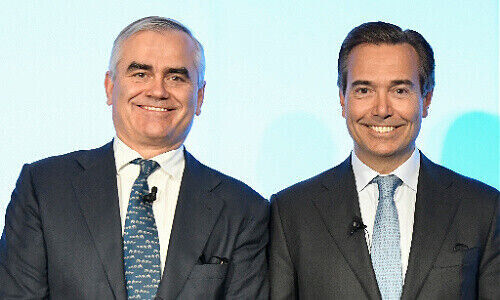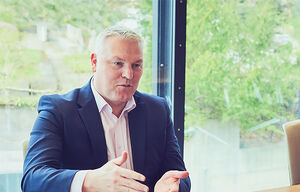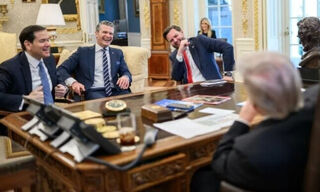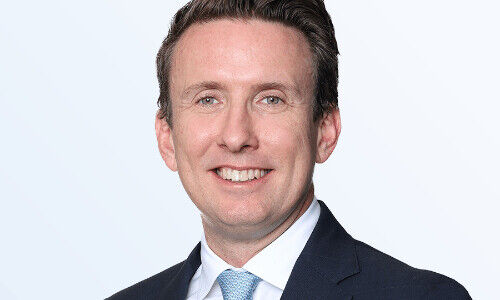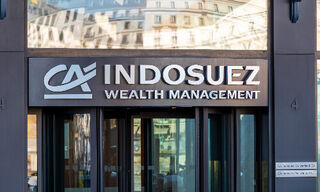Credit Suisse Settles Into State of Paralysis
The Swiss bank is heading into long period of uncertainty. As new leaders ascertain the damage and review strategy, finews.asia tallies the headwinds.
1. Untested Bank Board
Instead of backing up a growth plan, Credit Suisse’s board will devote this year to salvaging what it can of the Greensill and Archegos wreckage and outlining repair work. Chairman António Horta-Osório presides over a board which lacks the Swiss institutional knowledge he needs in regulatory terms (see point 6 «In Trouble With Bern»): just four of 12 members actually are Swiss, and of those two are U.S.-based.
The body has also seen considerable turnover, besides ex-Chairman Urs Rohner: Deloitte veteran Joaquin Ribeiro, ex-FSA overseer and «spygate» investigator John Tiner, and risk overseer Andreas Gottschling left. Auditing veteran Clare Brady and investment banker-turned-blockchain executive Blythe Masters joined. The loosely assembled group – not great being the adults in the room so far – are about to be fused by crisis.
2. CEO Thomas Gottstein: Lame Duck?
He is the person who has to explain how Credit Suisse became ensnared in disastrous dealings with Greensill and Archegos to 49,090 bank employees as well as other stakeholders CEO Thomas Gottstein has to parse his words carefully: blame or even tough talk could backfire on him. Despite Horta-Osório's backing last week, Gottstein's job is on the block. As long as Finma has three ongoing investigations (see point 6 «In Trouble With Bern»), investment banker Gottstein can't relax. His room to maneuver is also severely limited – his «clean slate» growth plan (see point 7 «What Digitization Plans?») is moot, of course, and it isn't looking good for «one-bank» either.
3. Top Management's Eyeballs
Chairman Horta-Osório has made it fairly clear he doesn't view Archegos and Greensill as the isolated mishaps as management have attempted to depict them as thus far. The involvement of at least eight top Credit Suisse executives in evaluating the two incidents indicate they were born out of errant strategy. Besides CEO Gottstein, veteran finance chief David Mathers is absorbed in the capital and fundraising side, Joachim Oechslin is restoring risk management, long-standing lawyer Romeo Cerutti is busy with an impending wave of class-action lawsuits, and Ulrich Koerner with Greensill reimbursements and the larger strategic questions looming for asset management.
Meanwhile, Philipp Wehle is busy soothing irate private clients who lost money on the supply chain funds, Christian Meissner is preoccupied with deleveraging the investment bank, taking out more than $10 billion in risk by year-end, and keeping sweet the key talent Credit Suisse needs despite obvious bonus cuts and strategic uncertainty, and Helman Sitohang is reevaluating key «one-bank» relationships come unstuck in recent quarters. In other words, instead of tackling a growth and transformation bid, at least 75 percent of Credit Suisse's top leaders are running interference on legacy issues.
4. Investment Bank Turbo Sputters
The unit's revenue surged by 80 percent in the first quarter – way beyond analysts' wildest forecasting dreams. Of course, Archegos decimated all that with $4.7 billion in losses – the worst-hit of the family office-hedge fund's prime brokers including Goldman Sachs, Deutsche Bank, and rival UBS.
The record revenue and crash to earth are entwined in that Credit Suisse eased the reins on risk in the quarter – as measured by risk-weighted assets, which surged 12 percent to 93 billion Swiss francs amid business growth. Risk-taking is now shackled amid a bank-wide review of indeterminate length, robbing the unit of its preferred revenue fillip. There won't be a repeat of the blow-out first quarter Credit Suisse had (before factoring in Archegos).
5. Treading Softly With Wealthy
The risk curbs apply to the whole bank – including its business with the world's wealthy. The unit has leaned heavily on Lombard lending in recent years to spur revenue, which the risk review will complicate. The same goes for private market investments, where the bank needs to use its own balance sheet.
Led by Philipp Wehle, the unit is treading softly as it navigates whether or not to recompense Greensill losses with its wealthy clientele, which make for the bulk of the supply chain product buyers. Until now, Credit Suisse has refused to do so, instead liquidating the assets and redeeming investments as it can. Just over half has flowed back to clients so far – the difficult part of the liquidation in terms of unpicking the Greensill-GFG-Sanjeev Gupta connections looms large.
CEO Gottstein has repeatedly warned that Credit Suisse may see withdrawals due to Greensill. Whether this hits hard or not – letting super-rich clientele stew in their losses is not a good look for a wealth manager.
6. In Trouble With Bern
The Swiss bank’s relationship with its home regulator was already frosty amid a court battle over «spygate». Since then, Finma has demanded a roughly 2 billion franc so-called Pillar 2 cushion against Greensill and another corresponding to its Archegos exposure (since released as Credit Suisse has largely wound down the position). This comes shortly after the exit of veteran regulator Mark Branson for Berlin – a painful loss of crisis expertise that Finma will sorely miss as it parses the three Credit Suisse probes.
7. What Digitization Plans?
As part of his growth plan, CEO Gottstein had teed up 2021 as a year of spending cuts as well as investing to expand. Last year, Credit Suisse reduced its branch network and integrated a local lender it owns – Neue Aargauer Bank. It plowed the roughly 600 million francs in proceeds from the move into a renewal of its technology.
That was before the double whammy of Greensill and Archegos. Credit Suisse's first-quarter loss and risk limits mean the bank needs to be incredibly economical with its capital. Forget getting any more promising efforts with an uncertain return or one far in the future, like banking app CSX, off the ground now.

